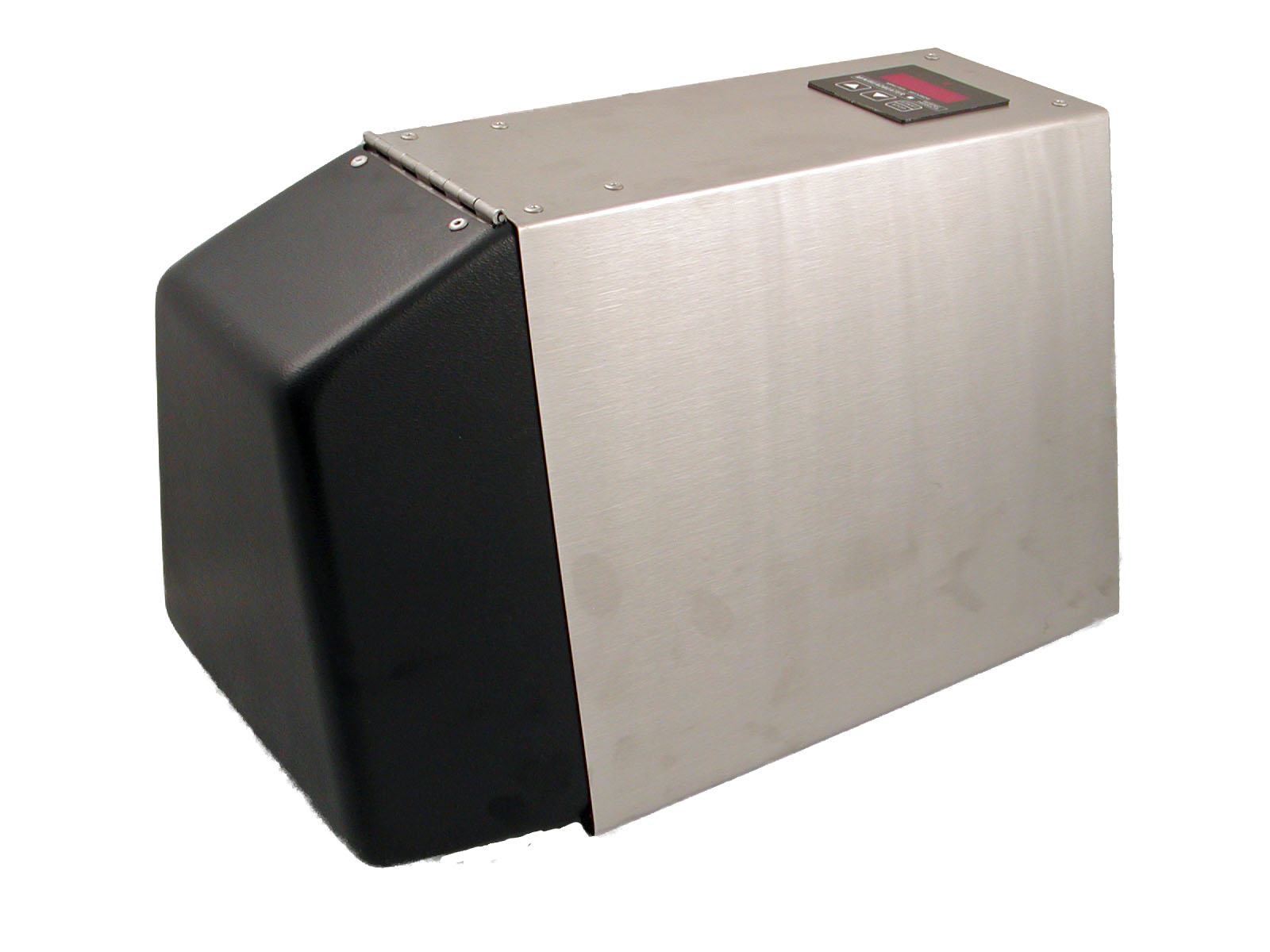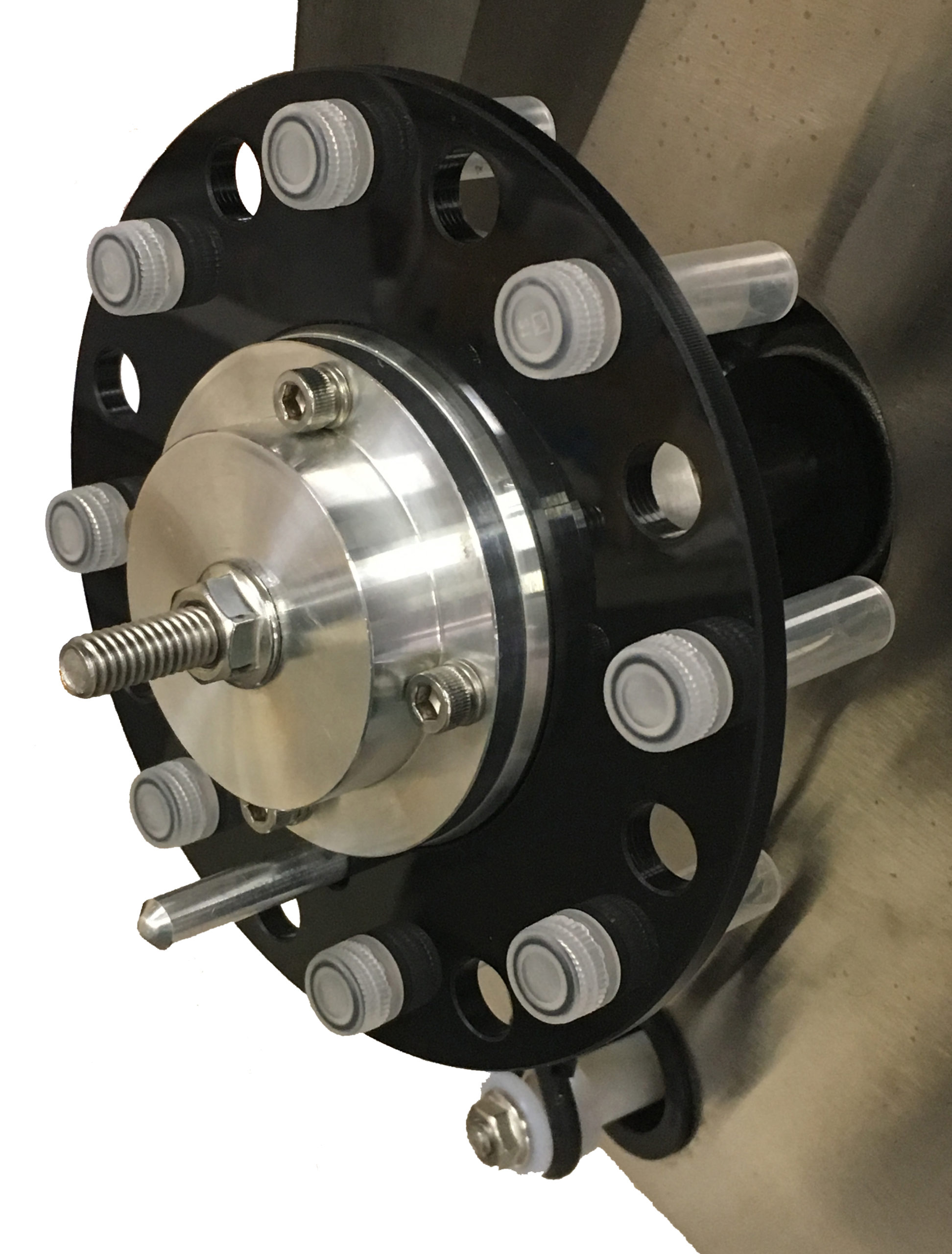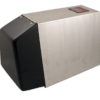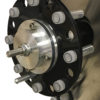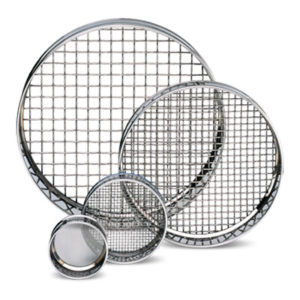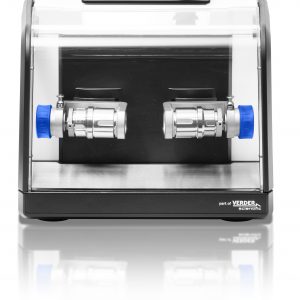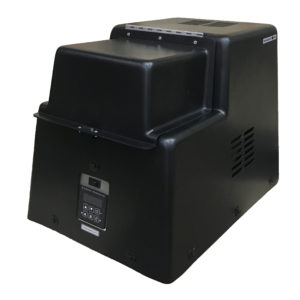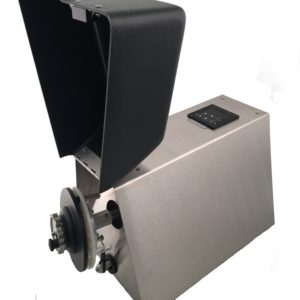he Mini-Beadbeater-16 can also be used for dry grinding. Steel beads are added to hard samples such as hair, bone, teeth, seeds and minerals and are completely powdered in 10-60 seconds. Softer materials such as biological tissue, rubber or plastics can also be powdered by first freezing the sample to liqN2 temperatures (a process called Cryo-grinding). Special break-resistant vials are highly recommended for dry- or cryo-grinding. The powdered material can be safely extracted with aqueous and most organic solvents in the same vial, thus simplifying recovery of the analytes.
Features to Consider when Shopping for a High Speed Shaking Bead-mill Cell Disrupter…
SHAKING TIME: If you are harvesting intercellular proteins you will want close to 100% cell disruption. The MiniBeadbeater series of cell disrupters deliver those high yields with 2-3 minutes of beadbeating. Some high-speed bead mill manufacturers claim “disruption times” of less than 30 seconds. That shorter time may suffice for PCR work where a partial extraction of nucleic acids is adequate, but for blotting methods or protein recovery, higher yields require more beadbeating time.
SHAKING SPEED: Some commercial bead-mill cell disrupters express their disruption setting as meters/second (m/s). This term combines shaking speeds in rpm with vial displacement distance to create a unit that supposedly defines a bead-mill’s cell disruption power to mechanically lyse cells. The fact is that there is no available formula that comprehensively defines cell disruption efficiency of bead mill grinding machines. Were a term to exist, it would need to take into consideration not only shaking speed and distance of vial displacement but additional important variables such as shaking direction (vertical vs.horizontal), shaking pattern (linear vs.figure eight), kinetics of change in shaking direction (sigmoidal vs. square wave), vials used (size and shape) and beads used (sizes, composition, bead load).
VIAL ORIENTATION, SHAKING PATTERN and SHAKING DISTANCE (THROW): Most bead mill cell disrupters shake 2 ml microvials in either a vertical (upright) or approximately horizontal direction. In terms of cell disruption efficiency (CDE), the horizontal position is more efficient than vertical. All shaking-type beadbeaters have flattened figure-eight shaking patterns. The exact shape of this figure-eight pattern has little impact on the CDE. Shaking distance (throw), however, has a significant impact on CDE. By necessity, all shaking type bead mill cell disrupters must have a vial throw of about ¾ to 1 inch.
The interplay of these multiple variables is complex. Each manufacturer attempts to optimize the interaction of these variables when designing their cell disrupter machine. As might be expected, some machines have achieved this goal better than others.
A final point: Published cell lysis protocols using high-speed bead-mill cell disrupters are seldom operated at shaking speeds less than the maximum speed. Thus, the availability of variable speed settings, be they “rpm” or “M/s”, might be viewed as a ‘bell and whistle’ feature.

